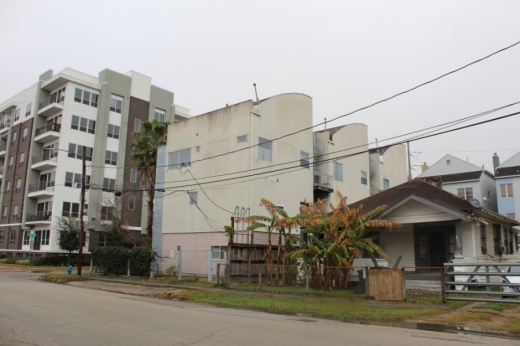The Montrose Tax Increment Reinvestment Zone, or TIRZ, has been working with urban design consultants from Asakura Robinson for over a year to collect feedback from community members, businesses and local officials. The end result, the Liveable Centers Plan, which was presented publicly for the first time March 8, outlines strategies for preserving the neighborhood’s identity as a bohemian enclave while managing new growth.
“If we do this correctly, when you see the streets, the greenways and the pedestrian right of way, you’ll know you’re in Montrose,” Montrose TIRZ Chair Joe Webb said. “You won’t need a sign. You’ll know it because of the way the neighborhood looks and feels.”
The Montrose TIRZ is funded through a portion of property tax collections within its defined boundaries. It has an approved budget of $167 million, based on projected revenue over the next 25 years, according to city records.
The Liveable Centers Plan serves as a guide for how the TIRZ can best utilize its funds, Webb said.
The plan lays out goals for restoring the neighborhoods’ affordability, promoting artists and small businesses, managing the effects of climate change, and improving mobility for pedestrians and drivers.
Affordability
An initial assessment of the neighborhood’s needs led by Asakura Robinson found that 90% of individuals who work in Montrose, typically in the service industry, do not live in Montrose.
It also found that the area’s supply of luxury units is outpacing its supply of older, lower-cost units, such as studio apartments and units found in older apartment complexes or duplexes.
Proposed solutions within The Liveable Centers Plan include the enforcement of a right-to-return policy and incentives for preserving older housing units. It also calls for increasing the area’s supply of accessory dwelling units, which are typically garage apartments.
A right-to-return policy would require any housing development that uses TIRZ funds to prioritize units for prospective residents who have previously been displaced from the community due to the rising cost of living, said Jeff Reichman, an analyst with data analytics and public policy firm January Advisors.
“The ingredients are there in Montrose. ... The thing we need the most is the community to have the will for it,” Reichman said of efforts to increase the area’s stock of affordable housing. “The next thing we need is land and existing structures to use. ... The money and the partners are there.”
Mobility and green space
Among the TIRZ’s proposals for the management of climate change are plans for distributing electric vehicle charging stations, planting tree cover and requiring tree plantings at developments that use TIRZ funds.
Increased tree cover serves several purposes, Houston Chief Sustainability Officer Laura Cottingham said.
“If you want to prevent flooding, improve water quality, prevent air pollution and reduce temperatures, increasing tree cover will do that,” she said.
A recent study found that in the Houston area, temperatures can vary by nearly 20 degrees between neighborhoods at the same time of day, often due to varying tree cover.
The concept could also be supported by the plan’s transportation goals which include a connective “greenway,” or trail, between Buffalo Bayou Park and Hermann Park.
Although road improvements continue to be a priority, the greenway system will increase residents’ ability to traverse the neighborhood without driving, Houston Chief Transportation Planner David Fields said.
“When you look at this plan, ... you can see the street off to the side, but it is the street corners and the space where people are interacting with each other that we are focusing on,” Fields said.
The full text of the study is not yet available but will soon be posted to www.montrosehtx.org, the consultants said. The study also includes timelines for implementation of the goals as well as suggested grants and public and private partners that can contribute additional funding, Webb said.
Editor's note: this post has been updated for clarity.





